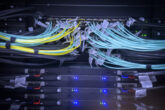September 12, 2018
The Algorithms of August
An artificial intelligence arms race is coming. It is unlikely to play out in the way that the mainstream media suggest, however: as a faceoff between the United States and China. That’s because AI differs from the technologies, such as nuclear weapons and battleships, that have been the subject of arms races in the past. After all, AI is software—not hardware.
Because AI is a general purpose technology—more like the combustion engine or electricity than a weapon—the competition to develop it will be broad, and the line between its civilian and military uses will be blurry. There will not be one exclusively military AI arms race. There will instead be many AI arms races, as countries (and, sometimes, violent nonstate actors) develop new algorithms or apply private sector algorithms to help them accomplish particular tasks.
In North America, the private sector invested some $15 billion to $23 billion in AI in 2016, according to a McKinsey Global Institute report. That’s more than 10 times what the U.S. government spent on unclassified AI programs that same year. The largest share came from companies such as Google and Microsoft, as well as a number of smaller private firms, not from government-funded defense research. This reverses the dynamic from the Cold War, when government investments led to private sector innovation and produced technologies such as GPS and the internet.
China says it already holds more than 20 percent of patents in the field and plans to build its AI sector to be worth $150 billion by 2030. But while Beijing and Washington are the current leaders in this race, they are not the only competitors. Countries around the world with advanced technology sectors, from Canada to France to Singapore, also have the potential to make great strides in AI (or build on lower-level advances made by others). While this diffusion means that many more countries will have a stake in the regulation of AI, it also means that many more governments will have incentives to go it on their own.
Read the Full Article at Foreign Policy
More from CNAS
-
Defense / Indo-Pacific Security / Technology & National Security
To Compete with China on Military AI, U.S. Should Set the StandardsThe United States has an opportunity to lead in global norms and standards for military AI at a critical moment, when the foundations laid today could shape how militaries use...
By Jacob Stokes, Paul Scharre & Josh Wallin
-
Defense / Energy, Economics & Security / Technology & National Security
The Outlook CEO Perspectives on Risk, Resilience and ReturnsJoin David Schwimmer and Richard Fontaine, CEO of the Center for New American Security, as they explore the current national security landscape and its impacts on global econo...
By Richard Fontaine
-
Technology & National Security
The Trump-Xi Truce Shows Who Really Holds the LeverageThis article was originally published in The Australian Financial Review. Since President Trump returned to office, the U.S.-China relationship has lurched between confrontat...
By Ruby Scanlon
-
Technology & National Security
NOTUS Perspectives: AI Requires Massive Allocations of Energy. Will Other Sectors Suffer?On the current trajectory, the government may need to prioritize energy for AI over other uses to ensure the United States remains the global leader in advanced AI....
By Janet Egan




